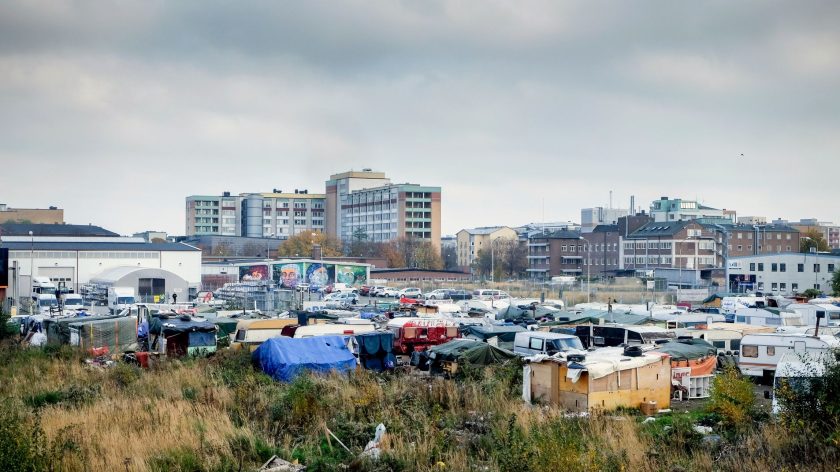Income Inequality in India

This report has been authored by Apoorva Ramachandra from Arthashastra Intelligence Foundation
India has observed tremendous growth in the past two decades. While we are paving our way to a five trillion-dollar economy, have we lost sight of areas that require attention? A society that is already fragmented based on caste, religion, and gender; income disparity is another addition to the list.
According to World Inequality Database, as of 2016, 10% of the Indian Population owned 56.13% of the total national income share, the middle 40% took 29.21%, and the bottom 50% took 14.68%. The trigger point of this rising disparity seems to be the liberalization measures initiated in 1991. From 1991 to 2016, the top 10% of the population’s total national income share increased by 22.03%, while the bottom 50% and middle 40% decreased by 7.53% and 14.49%, respectively.
A commonly used indicator of income inequality is the Gini Index. It measures the extent to which the income distribution among individuals in an economy is away from an equal society. A value of 0 indicates the economy is perfectly equal and a value of 100, perfect inequality. The Gini Index value was 47.9 in 2018 for India.
As per The Global Social Mobility Report, 2020, India ranks 76 out of 82 countries. Social Mobility is the ability of an individual to experience a better life than their parents, measured through intergenerational income elasticity. A value of 0 implies no relationship between a child’s family background and future incomes while a value of 1 means that a child born to a low-income family will remain poor and a child born to a wealthy family will remain so. India has an intergenerational income elasticity of 0.6. As per the report, it would take seven generations for an individual born to a low-income family to obtain a mean income.
It is a common notion that as economies grow and become more developed, economic inequality will reduce. However, available data does not corroborate this theory. There is a requirement for strong policies in place to ensure redistribution takes place. Investment in education, health, and strong labor laws enables to improve social mobility and, hence, reduces persistent inequalities. These areas seem to have been almost entirely overlooked in India.
Spending on Education as a percentage of GDP has been 3 percent on average from 2014-15 as opposed to the recommended 6 percent. There is an even pressing need to increase spending as technology improves and automation replaces many jobs. Education and upskilling are the ways to ensure that the booming youth population in India is skilled enough to be employed over the next decade. As per the NSO household education report, 95% of the people aged between 16 and 29 have never received any kind of vocational or technical training. More than 50% of the people attend government institutions while 34% of the people do not attend government schools as they do not provide satisfactory education. This underscores the dire requirement for improving the quality of education offered in government institutions.
83.5% of the total participating labor force in non-farm sectors are employed in the informal sector. The informal sector is responsible for absorbing a vast section of the labor force who otherwise would have been unemployed. However, these firms work outside of the ambit of the law, and thus, such workers do not receive any form of job security or social protection. The introduction of the Unorganized Worker’s Social Security Act, 2008 and the Code on Social Security, 2019 are instrumental in protecting unorganized workers’ rights; however, they have not been delivered.
The percentage of GDP spent on health on average in 2017-18 is a meager 1.5 percent compared to other low middle-income countries where spending is 5.3 percent on average. Out-of-pocket expenditure is 62.40% of total health spending as opposed to 39% in other low middle-income countries in 2017. According to a survey, an alarming 85.9% in rural areas and 80.9% in urban areas are not covered by any health expenditure scheme. Excessive dependence on out-of-pocket expenditure increases financial hardship for the poor and thereby feeds into larger inequalities.
Increasing economic growth is a top priority for countries across the world. While growth is responsible for bringing millions out of poverty, it is inadequate to solely rely on it. There is a requirement to find the balance between achieving good growth and ensuring social and economic inclusion. Economic growth along with evidence-based policies are the way to tackle problems like inequality and poverty. India is a labor surplus economy and prioritizing human capital development will come a long way in achieving sustainable and inclusive growth.
References:
- (2021). Economic Survey 2020-21: Social Infrastructure, Employment and Human Development. Ministry of Finance. Government of India.(2019).
- Global Spending on Health: A World in Transition. Geneva: World Health Organization.
- Knoema. (2021, March). Retrieved from World Data Atlas: https://knoema.com/atlas/India/topics/Poverty/Income-Inequality/GINI-index
- Mehrotra, S. (2019). Informal Employment Trends in the Indian Economy: Persistent informality, but growing positive development. Employment Policy Department, 15.
- National Statistics Office. (2019). Key Indicators of Social Consumption in India: Health. Government of India.
- National Statistics Office. (2020). Household Social Consumption on Education in India. Government of India.
- World Bank Open Data. (2021, March). Retrieved from World Bank Open Data: https://data.worldbank.org/indicator/SH.XPD.OOPC.CH.ZS?locations=IN
